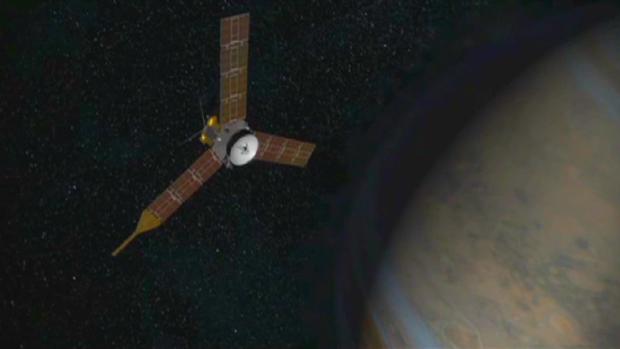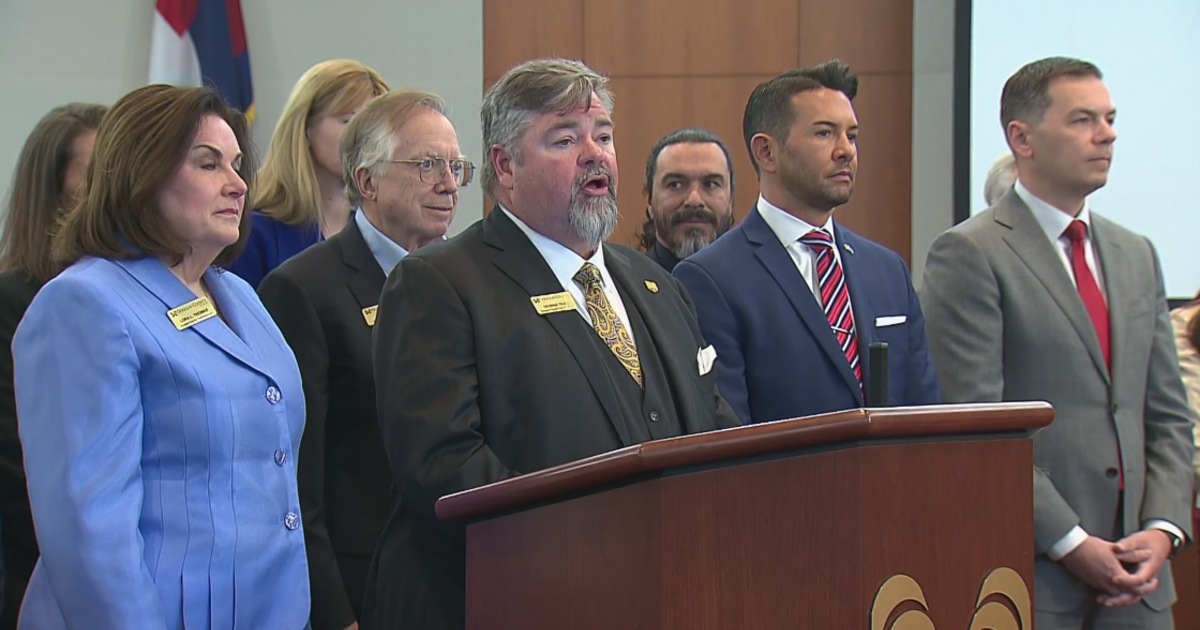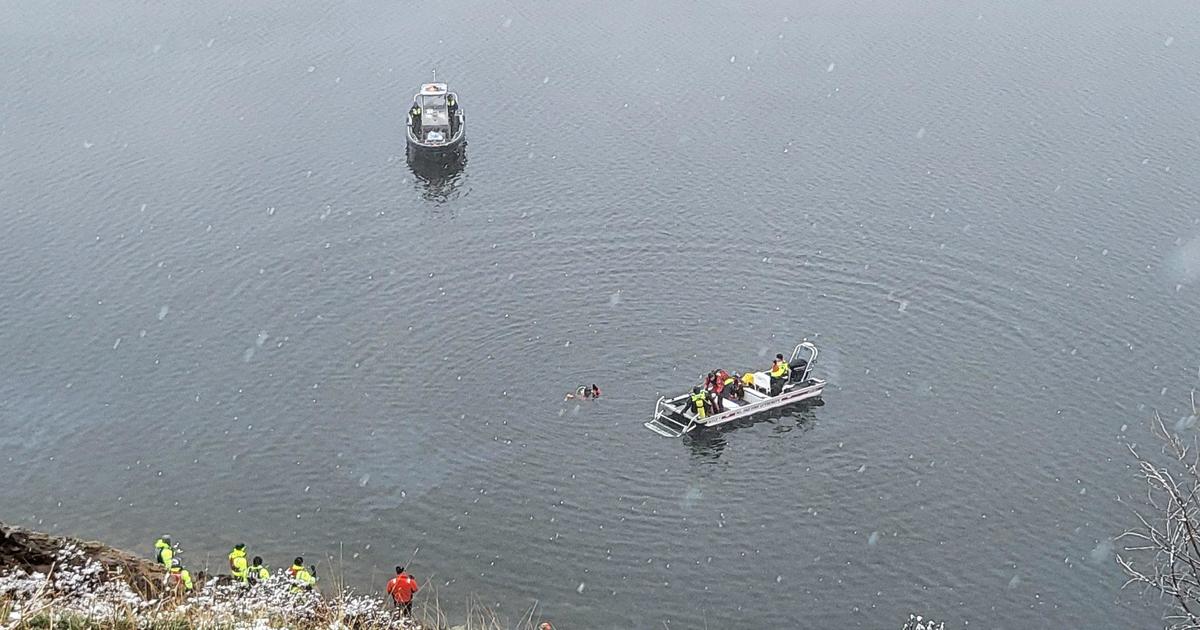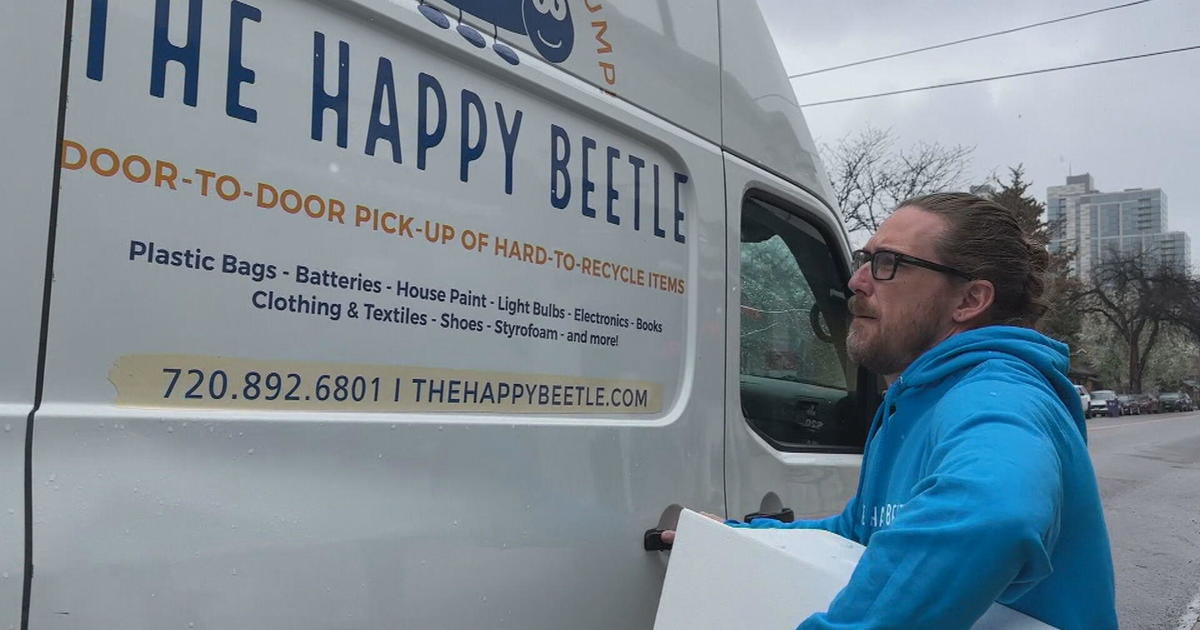Exclusive: Colorado Built Spacecraft Bound To Jupiter
 DENVER (CBS4) - CBS4 was the only Denver TV station to ride along earlier this month when a made-in-Colorado spacecraft was delivered to the Kennedy Space Center in Florida.
DENVER (CBS4) - CBS4 was the only Denver TV station to ride along earlier this month when a made-in-Colorado spacecraft was delivered to the Kennedy Space Center in Florida.
Called Juno, the spacecraft was designed and built by Lockheed Martin at its Waterton Facility in Jefferson County.
"I consider it my baby," said Eric Roberts, a space engineer with Lockheed who supervised Juno's delivery to Florida.
Early on departure day, April 8, a carefully-packed and crated Juno was sitting on top of a flatbed truck with flashing lights. Lockheed employees line the sidewalks to wish the spacecraft bon voyage. Several escort vehicles were cued up, including several sheriff's department patrol cars. They blocked traffic, when it was necessary, for the convoy to Buckley Air Force Base in Aurora.
It was a tricky route. The flatbed driver had to veer into the center lane to make sure the oversize load fit under and didn't smack highway overpasses.
A somewhat disheveled Roberts was asked how he slept the previous night?
"I slept well," he said. "I have something to help me with that, I need it for days like this for sure."
After an uneventful hour-long drive, the Juno convoy went through the security gate at Buckley with traffic halted in all directions. The spacecraft was driven out to a waiting C-17, a large transport jet flown by the Air Force.
Military loadmasters worked with Lockheed engineers to load several pallets of cargo. Then, ever so gently, Juno was lifted up and into the back of the big aircraft. The clearance between the containerized spacecraft and the roof of the jet was perhaps 4 inches.
Roberts knew it was a tight squeeze
"We don't dare go with the bigger container; we have to take the spacecraft apart so it can fit there."
Loading Juno and all its' support gear took several hours. Finally it was wheels up.
Juno headed cross country on the first leg of what will be a 5-year journey to the largest planet -- Jupiter.
"It's such a nasty place," said Tim Halbrook, one of Lockheed's lead space engineers working on Juno.
Halbrook explained that Jupiter has intense radiation. Also, charged particles from the sun are accelerated by the planet's electromagnetic field.
"If you took your computer to Jupiter," he said with a smile, "It wouldn't work too well."
To ensure Juno operates in Jupiter's harsh environment, the spacecraft was built with a titanium vault to shield the brain of the spacecraft.
"What they're worried about is the degradation of insulation on wires and delicate electronic components on circuit boards," explained Jack Farmerie, a lead spacecraft technician.
Another big design challenge for Juno was to run the electrical instruments. The decision was made to use three 30 foot solar wings. They had to be cleverly fashioned because no other spacecraft has gone so deep into space relying totally on power from the sun.
"We did cherry pick solar cells for their performance in the conditions this vehicle has to operate in (namely) cold temperature and low sunlight," said Russ Gehling, a solar energy expert with Lockheed.
Gehling explained that if Juno were to operate in Earth orbit, its solar panel wings would create enough electricity to run an average home.
But because it's going all the way to Jupiter -- five times farther from the sun -- its solar system can produce barely enough energy to operate four 100 watt light bulbs. But 400 watts is precisely what's needed for Juno's scientific instruments.
The mission calls for 32 polar orbits so Juno can peer deep into Jupiter's clouds and hopefully begin to unravel how it was formed. It's believed finding the answers will go a long way towards explaining how the solar system was created.
The flight to Kennedy Space Center proved to be surprisingly comfortable. It was also quicker than a commercial flight. But by the time it land at the Cape, it was well after dark.
Before unloading, temperature and humidity were carefully checked on the spacecraft to make sure there was no condensation.
"Because we could get a short in the electrical components," explained Lockheed's Katie Oakman.
Juno was last on the plane. But was first off and the crew carefully rolleds the container down the C-17's tailgate.
There was a buzz of excitement to be part of a billion dollar space mission to Jupiter.
"We're going to see what those clouds are hiding underneath; think it should be fun," commented Curtis Wilkerson, a quality control specialist with NASA-JPL.
Somebody quipped, "We're inside the 5-yard line boys, don't drop the ball."
A forklift moved in to lift Juno on to a waiting flatbed. Five minutes went by, then 10. No fumble, but the team was thrown for a loss. The forklift assigned to the job was the wrong size. Good thing for Eric Roberts that he got all that sleep the night before.
"Something didn't get checked and that's what happens," he explained later.
By working a couple hours, the team regrouped and stayed on schedule for Juno's ceremonial unwrapping the next day in the clean room at Astrotech Space Operations in Titusville.
A thorough check found no broken glass -- no damage at all. Smiling in his white "bunny' suit, Roberts summed up the delivery.
"This is very rewarding; it feels like we scored a touchdown here."
There was a small celebration that night, but months of hard work still lie ahead. Even if all goes perfectly, they know there will be surprises.
"I would predict," Halbrook said, "that once we get to the planet there will be many things that, wow, we didn't expect that."
Juno's launch -- atop an Atlas rocket -- is scheduled for Aug. 5.
Link: Juno | Lockheed Martin




